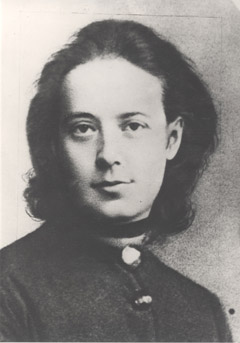Marianne Hainisch facts for kids
Quick facts for kids
Marianne Hainisch
|
|
|---|---|

Hainisch, circa 1872
|
|
| Born |
Marianne Perger
25 March 1839 Baden bei Wien, Austria
|
| Died | 5 May 1936 (aged 97) |
| Known for | Founder of the Austrian women's movement |
| Spouse(s) | Michael Hainisch (m. 1857) |
| Children | Michael (1858) Maria (1860) |
Marianne Hainisch, born Marianne Perger, was a pioneering woman from Austria. She lived from 1839 to 1936. Marianne is known as the founder and a key leader of the Austrian women's movement. She was also the mother of Michael Hainisch, who later became the second President of Austria (from 1920 to 1928).
Contents
Early Life and Family
Marianne Perger was born in 1839 in a town called Baden, near Vienna, in Austria. Her family was well-off. Her father, Josef Perger, owned several factories in Hirtenberg. Marianne and her brothers and sisters were taught at home by special tutors hired by their mother.
In 1857, Marianne married Michael Hainisch. He was an industrialist, meaning he owned and managed factories. Michael had a spinning factory in a place called Aue. Marianne and Michael had two children: a son named Michael, born in 1858, and a daughter named Maria, born in 1860. In 1868, the family moved to the city of Vienna.
During the American Civil War (1861–1865), Michael's business faced big problems. It was hard to get cotton wool from the United States because of the war.
Fighting for Women's Education
In the late 1860s, Marianne had an experience that changed her life. A friend of hers needed to find work to support her family because her husband was sick. Even though her friend spoke several languages and was talented in music, she could not find a job.
This made Marianne, who was about 30 years old, realize something important. She saw that education was key for middle-class women to get good jobs. In 1870, she wrote an article about this idea, called "On the Education of Women." No newspaper would publish it.
So, on March 25, 1870, she presented her article at a public meeting. She bravely called for the city of Vienna to create special school classes for girls. This was a big deal and was reported widely in newspapers. As a result, a bank called the First Austrian Savings Bank donated a large sum of money (40,000 Austro-Hungarian gulden) to help start a girls' school.
Leading the Women's Movement
Marianne Hainisch continued her important work. In 1888, she started the League for Extended Women's Education. This group pushed for women to be allowed to attend higher education (universities).
In 1902, she founded the Federation of Austrian Women's Organisations. She was the leader of this important group until 1918. In 1904, the Federation joined the International Council of Women. Marianne was elected Deputy President of this international group in 1919, a role she held until 1924.
On October 17, 1906, Marianne organized a meeting for the Committee for Women's Suffrage. "Suffrage" means the right to vote. She welcomed famous speakers like Carrie Chapman Catt and Aletta Jacobs. Marianne also announced that thousands of people had signed a petition. This petition asked the government to remove Section 30 of the Association Act. This part of the law stopped women from having political power.
Later Life and Legacy
In autumn 1918, Marianne Hainisch joined the Civil-Democratic Party. Eleven years later, she helped create the Austrian Women's Party.
Marianne Hainisch is also known for starting Mother's Day in Austria. This special day has been celebrated there every year since 1924.
Marianne Hainisch passed away on May 5, 1936.
Her home town of Baden honored her in 1967 by putting up a statue of her. In 1989, Austria released a special stamp to celebrate 150 years since her birth. In 2002, a street in Vienna was named Marianne-Hainisch-Gasse in her honor.
Works
- On the Education of Women, 1870
- The Mothers, 1913.
See also
 In Spanish: Marianne Hainisch para niños
In Spanish: Marianne Hainisch para niños

